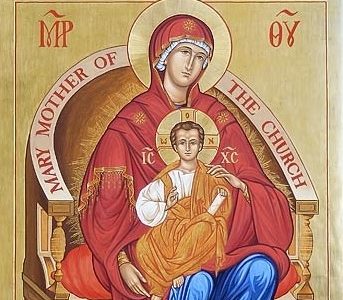So why all the changes and why is the feast about Mary and not Jesus? Well, the feast IS about Jesus. It is still the Octave of Christmas. We celebrate Mary because she is the Mother of God! In the fifth century a heresy was proposed that Mary was the mother of Jesus, and was the mother of the Messiah, but NOT that she was the mother of God. The reasoning of the heresy, Nestorianism, was that Mary could not be the mother of the God who created her. In other words, the logic of human procreation was applied to the Incarnation of Jesus, which was NOT human procreation! That is NOT the faith of the Church!
The Church taught that since Jesus IS truly God, the Son of God and IS truly man, the son of Mary; then Mary, his mother, IS truly the Mother of God! The word used in Greek is Theotokos, or "God-bearer". So, we celebrate January 1, the eighth day of the Octave of Christmas, the day on which Jesus was circumcised into the Jewish covenant, as the day of the maternity of Mary, who was the Ark of the New Covenant, the MOTHER OF GOD, JESUS!
* https://pxhere.com/en/photo/1174875














